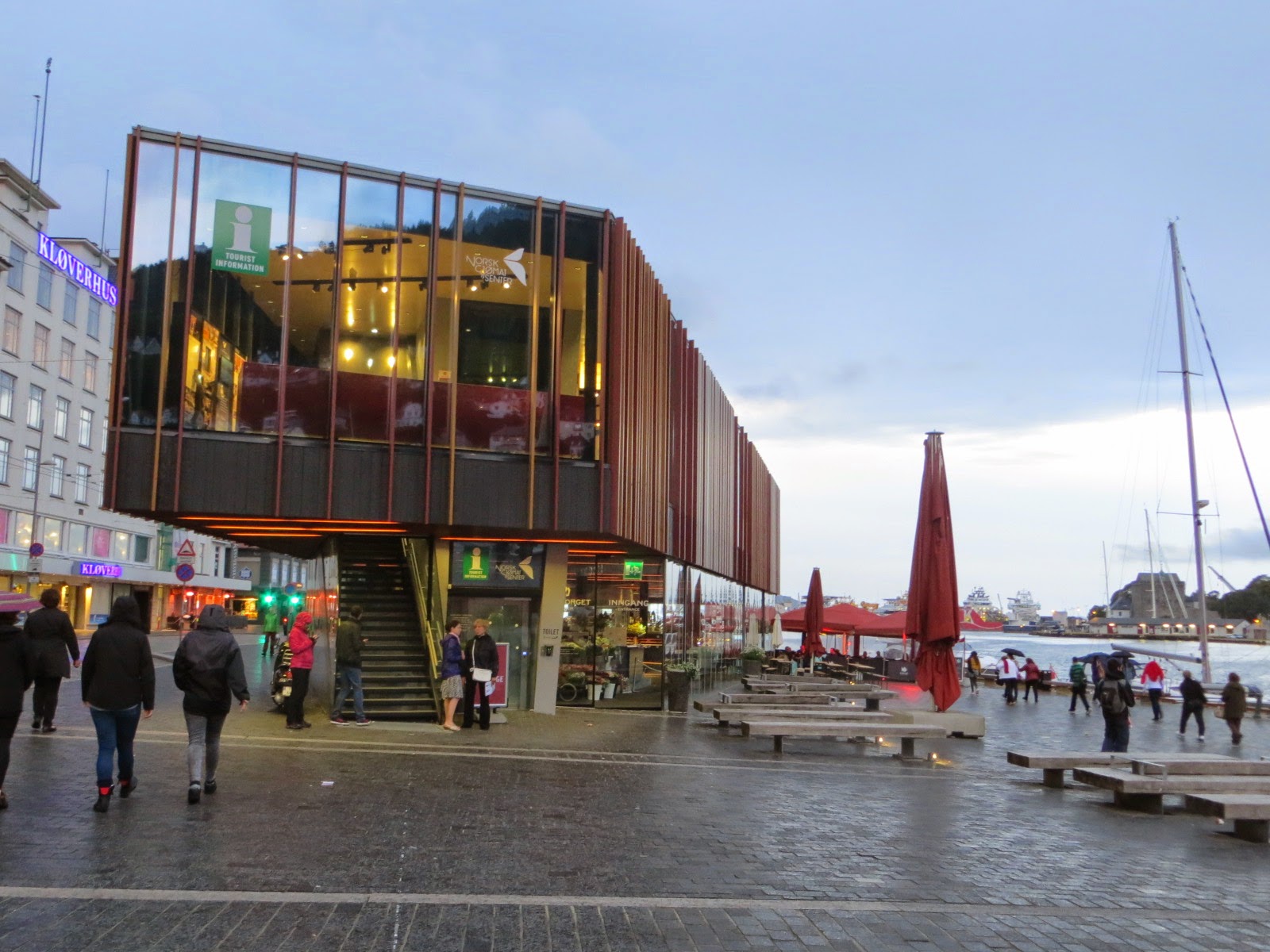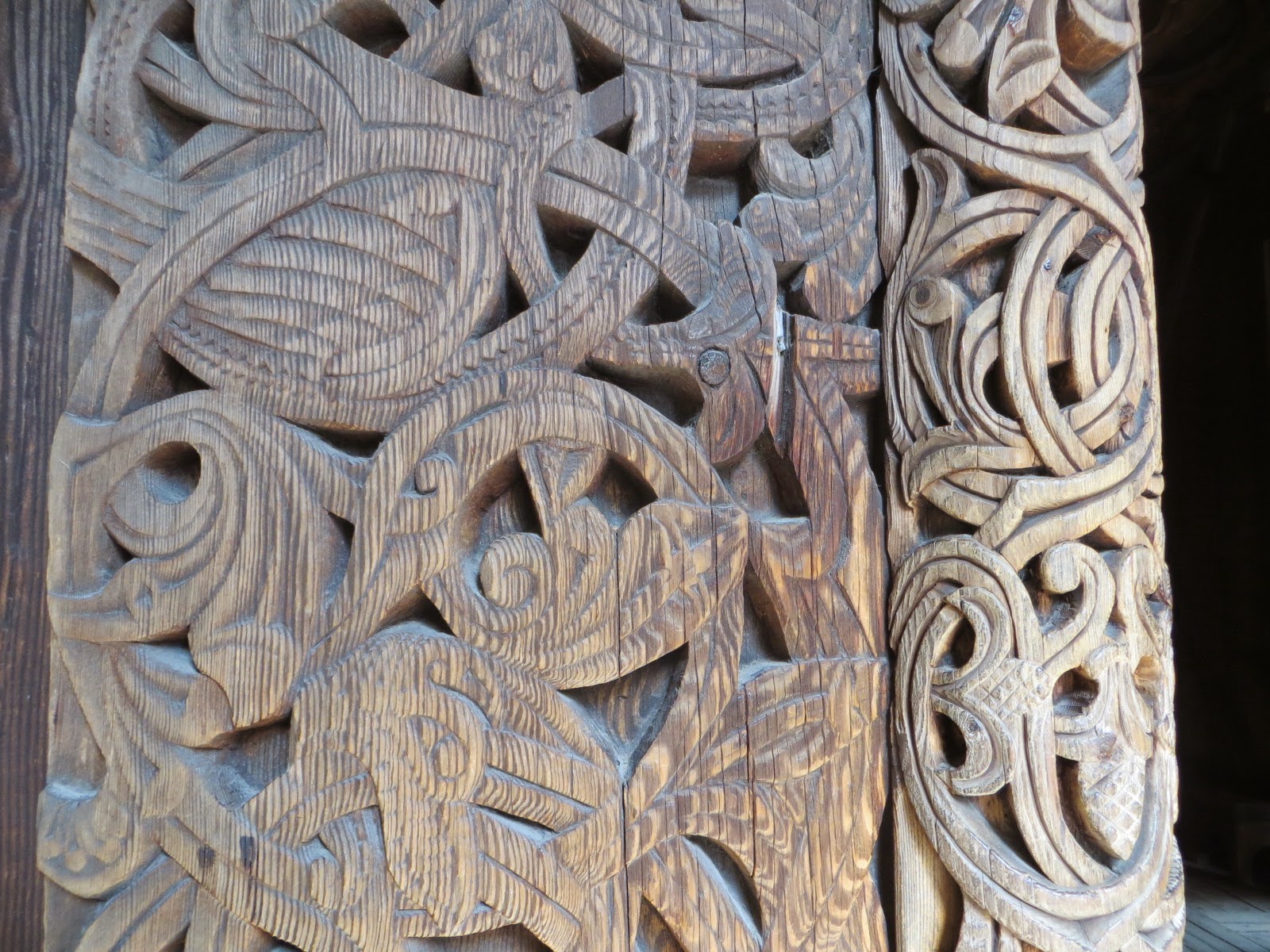Eder Beisel Arkitekter 2009-2011
An appropriate balance of the permanent and the provisional, subtle form carefully placed in space, facade modelling that changes character from different viewpoints, the application of glass that appears conventionally transparent and reflective, but also as solid as dark timber: Eder Beisel Arkitekter's approach shows deep understanding of the elements of architecture and how to combine them with quiet power.
This unassuming project, located on the quayside of the picturesque Vagen, or Harbour, in central Bergen, demonstrates how well confident contemporary architecture can work in a sensitive historic context. A tapered box, through-glazed for part of the ground level, it is mainly clad in stained vertical timber boards. Projecting vertical strips at random intervals are stained the colours of traditional Norwegian construction: deep pine green, yellow ochre, dark reds and white. The relationship of the building to the quayside is carefully judged: the sloping paved surface runs through the building from the street down to the harbour edge. Frameless glass and big sliding doors complete the effect with simple means. Baulks of timber incorporated into the stone paving add scale and grain.
Inside, stalls selling a wonderful array of seafood, from live giant spider crabs and gleaming fresh fish to less appetising dark red hunks of whale meat, jostle with fast turn around fish restaurants. At one end of the building service elements, such as toilets, stores, freezer units, kitchens and refuse, are neatly contained within the plain timber-clad enclosure.
A modest glass entrance at the narrow end of the tapered building contains a lift and stairs to a tourist information centre that occupies the upper level. Fitted out with birch ply panelling and ceilings, this space gives great views across the harbour to the Hanseatic warehouses of the Bryggen opposite, painted in the same colours as the Fish Market. Eder Beisel Arkitekter's modest timber and glass building, relaxed without being picturesque, demonstrates a real understanding of the character of the Bergen quayside.



















































